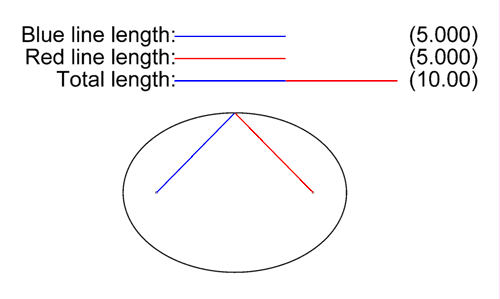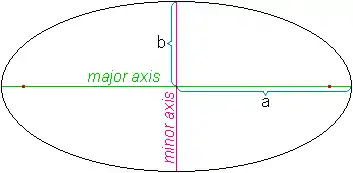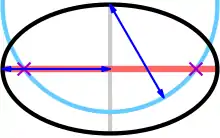< Algebra





An ellipse is the collection of points that are equidistant from two points, called foci (singular focus).
The foci are found on the major axis, which has a length of 2a. The minor axis is 2b, and is smaller.
The "roundness" or "longness" of an ellipse can be measured by eccentricity. If c is the distance from the center to a focus, then e = c / a.
The latus rectum is a line parallel to the minor axis that crosses through a focus. Its length is b2 / a.
"Long" ellipses are generally written as
where (h,k) is the center, while "tall" ellipses are written as

A method to locate the foci of any ellipse: the foci (purple crosses) are at intersects of the major axis (red) and a circle (cyan) of radius equal to the semi-major axis (blue), centred on an end of the minor axis (grey)
This article is issued from Wikibooks. The text is licensed under Creative Commons - Attribution - Sharealike. Additional terms may apply for the media files.